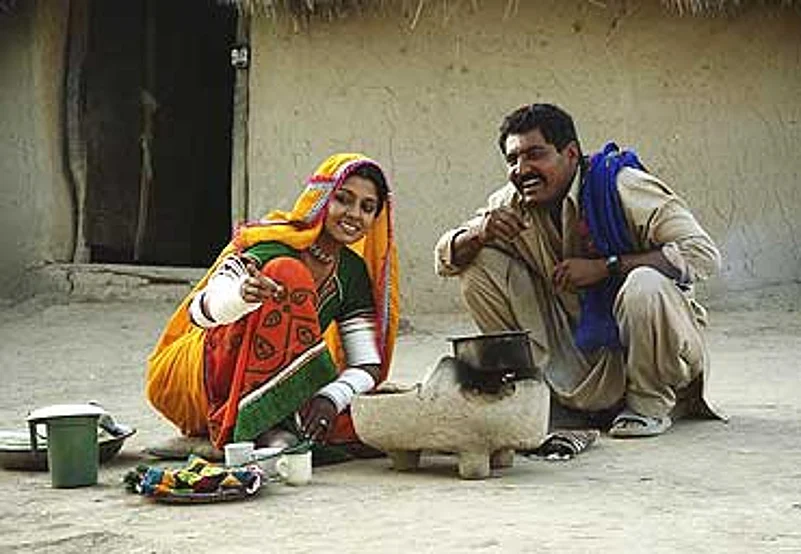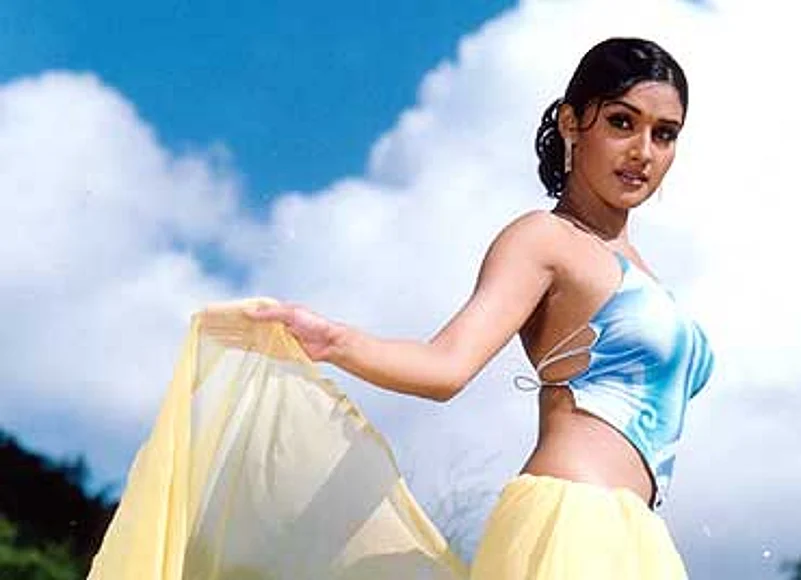
A scene from Ramchand Pakistani
If Shehzad Rafique's Mohabbatan... feels like the "traditional at heart but modern in looks" cinema of Yash Chopra and Karan Johar, his Salakhen, which ran for a smashing 75 weeks in Pakistan and got released here last week, is a blast from Bollywood's past—the rough and tough world of the '80s where the macho man, be it Big B or Mithun Chakraborty, was a lumpen with a heart of gold. These films were about a constant battle with the unjust, stifling system.
No wonder the cinema exchange programme between the neighbours has been striking the right notes of understanding, identification and appreciation in India. We are the same people, sharing a similar popular culture as well. "It's awesome to see how the divisions between us can get settled and resolved so quickly through cinema," says Joginder Mahajan, a distributor of Salakhen and Mohabbatan....
Then why did it take so long for Indians to be able to watch a Pakistani film on the big screen? Even though India has never imposed a ban on import of films from any nation (save South Africa at the height of apartheid) no Pakistani film ever made it here, largely because of the perception that they were substandard. Sabiha Sumar's Khamosh Pani may have got shown selectively, but it was in fact a European co-production, made with South Asian talent.
It was Shoaib Mansoor's Khuda Kay Liye that changed things dramatically, earning new respectability for Pakistani cinema the world over. In India it got a standing ovation at the Goa Film Festival last November, enough to make Percept Pictures pick it up as the first indigenously produced Pakistani film to be released in India.
Khuda... reflects the changing spirit of Pakistani film industry: making socially conscious movies that question institutions and provoke debates but squarely within the narrative frame and story-telling conventions of mainstream cinema. "It's not some cheap imitation of Bollywood but reflects the renaissance in Lollywood," says film maker Mahesh Bhatt.
Another such modern Pakistani film is waiting in the wings: Mehreen Jabbar's Ramchand Pakistani, the first to focus on the minority Hindu community in Pakistan. It stars Nandita Das as the wife of a poor Pakistani peasant who accidentally crosses over to India. It is likely to be the first Pakistani film to get a simultaneous release in India. There's more to come: Majajan, an intense love story about a Nawab's son, played by superstar Shan, who falls for a courtesan.
"It's heartening to see posters of Bollywood and Lollywood juxtaposed against each other," says Bhatt. Some years ago Pakistani TV serials had become a rage on the video circuit. Then Bhatt himself made it almost de rigueur to use Pakistani singers in Hindi film songs. Pakistani artistes like Javed Sheikh and Meera have been working in Bollywood and Pakistani filmmakers have been regularly coming to India for post-production work. As a cherry on the cake last year Pakistan lifted the long-standing ban on Indian films as well.

Zara Sheikh in Salakhen
This exchange might have created new markets for both the cinemas, but Lollywood has a long way to go to catch up with Bollywood. It makes just about 30 films a year against India's 1,000, with an average production cost of a mere Rs 2.5 crore. But the Pakistani industry is pleased. Khuda... got released in India with 63 prints, started slowly, but picked up and at last count had grossed Rs 3 crore. "There are more heads watching and more mouths talking by the day," says Ashok Ahuja, director, sales and acquisitions, Percept Pictures.
Salakhen released with 15 prints in the Delhi-UP circuit, did 30 per cent business in the first week and is still doing specially well in cinemas like Shiela in Delhi and in centres like Moradabad, Saharanpur and Malegaon, claims Inderjit Singh of Innovisions, the importers of the film. No wonder the real market for these films is being seen in the B/C grade centres, which are being ignored by Bollywood in its quest for urban and NRI audiences. "The Sunny Deol kind of films are not getting made any more; Pakistani films will fill that gap," says Mahajan. Pakistani filmmakers are specially aiming at Punjab. "Our cinema is primarily being made in Punjabi rather than Urdu and can have a ready audience in Punjab here," says Rashid Khawaja, CE, Cinetel Entertainment.
But business apart, Pakistani films would undoubtedly help create awareness and clear misperceptions about the country. "Through Bollywood movies there is lot of awareness in Pakistan about India. Here you might be thinking of us as regressive but our films will show you that we are a progressive nation and cities like Lahore are very modern," says Khawaja. That would indeed be the real gain for Pakistan.

















